![CoverIssue[3]](https://blogs.rsc.org/ob/files/2012/02/CoverIssue3.gif)
As you know, we are celebrating the journal’s 10th Anniversary, and counting down the Top 10 most cited Organic & Biomolecular Chemistry research works from our different formats, according to ISI*. This week, find out which are our most cited ever Full Papers.
In addition all of these articles will be FREE for you to read until the end of next week.
10. Tandem oxidation processes for the preparation of nitrogen-containing heteroaromatic and heterocyclic compounds
Steven A. Raw, Cecilia D. Wilfred and Richard J. K. Taylor
Org. Biomol. Chem., 2004, 2, 788-796 DOI: 10.1039/B315689C
9. Novel molecular drug carrier: encapsulation of oxaliplatin in cucurbit[7]uril and its effects on stability and reactivity of the drug
Young Jin Jeon, Soo-Young Kim, Young Ho Ko, Shigeru Sakamoto, Kentaro Yamaguchi and Kimoon Kim
Org. Biomol. Chem., 2005, 3, 2122-2125 DOI: 10.1039/B504487A
8. Organocatalytic enantioselective indole alkylations of α,β-unsaturated ketones
Wei Chen, Wei Du, Lei Yue, Rui Li, Yong Wu, Li-Sheng Ding and Ying-Chun Chen
Org. Biomol. Chem., 2007, 5, 816-821 DOI: 10.1039/B616504D
7. Promoting laccase activity towards non-phenolic substrates: a mechanistic investigation with some laccase–mediator systems
Paola Baiocco, Anna Maria Barreca, Maura Fabbrini, Carlo Galli and Patrizia Gentili
Org. Biomol. Chem., 2003, 1, 191-197 DOI: 10.1039/B208951C
6. Synthesis and photophysical evaluation of charge neutral thiourea or urea based fluorescent PET sensors for bis-carboxylates and pyrophosphate
Thorfinnur Gunnlaugsson, Anthony P. Davis, John E. O’Brien and Mark Glynn
Org. Biomol. Chem., 2005, 3, 48-56 DOI: 10.1039/B409018G
5. Nitrophenyl derivatives of pyrrole 2,5-diamides: structural behaviour, anion binding and colour change signalled deprotonation
Salvatore Camiolo, Philip A. Gale, Michael B. Hursthouse and Mark E. Light
Org. Biomol. Chem., 2003, 1, 741-744 DOI: 10.1039/B210848H
4. Comparison of topological descriptors for similarity-based virtual screening using multiple bioactive reference structures
Jérôme Hert, Peter Willett, David J. Wilton, Pierre Acklin, Kamal Azzaoui, Edgar Jacoby and Ansgar Schuffenhauer
Org. Biomol. Chem., 2004, 2, 3256-3266 DOI: 10.1039/B409865J
3. Design, synthesis and photophysical studies of simple fluorescent anion PET sensors using charge neutral thiourea receptors
Thorfinnur Gunnlaugsson, Anthony P. Davis, Gillian M. Hussey, Juliann Tierney and Mark Glynn
Org. Biomol. Chem., 2004, 2, 1856-1863 DOI: 10.1039/B404706K
2. Urea vs. thiourea in anion recognition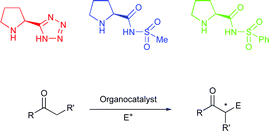
David Esteban Gómez, Luigi Fabbrizzi, Maurizio Licchelli and Enrico Monzani
Org. Biomol. Chem., 2005, 3, 1495-1500 DOI: 10.1039/B500123D
1. Organocatalysis with proline derivatives: improved catalysts for the asymmetric Mannich, nitro-Michael and aldol reactions
Alexander J. A. Cobb, David M. Shaw, Deborah A. Longbottom, Johan B. Gold and Steven V. Ley
Org. Biomol. Chem., 2005, 3, 84-96 DOI: 10.1039/B414742A
Why do you think these papers have been so highly cited? Do you remember when these articles were first published? Perhaps they had an impact on your own research? We’d love to find out more – tell us by posting a comment on the blog in the box below……
Have you missed the Top 10 cited OBC communications? Find them in our earlier post here.
*Top cited articles according to ISI on the 1st of February 2012
![GA[11]](https://blogs.rsc.org/ob/files/2012/03/GA111.gif) A sensing system to detect cysteine (Cys), an essential amino acid, has been developed by scientists in the US and China. Elevated levels of Cys have been associated with neurotoxicity, while Cys deficiency is involved in a number of other disorders.
A sensing system to detect cysteine (Cys), an essential amino acid, has been developed by scientists in the US and China. Elevated levels of Cys have been associated with neurotoxicity, while Cys deficiency is involved in a number of other disorders.










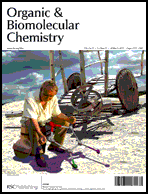

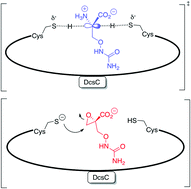
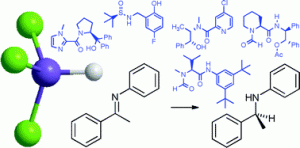
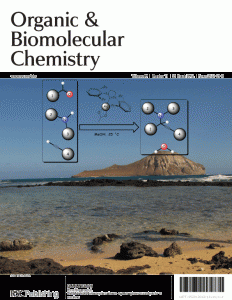
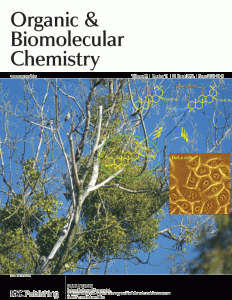

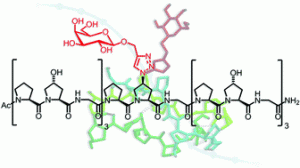

![CoverIssue[3]](https://blogs.rsc.org/ob/files/2012/02/CoverIssue3.gif)

